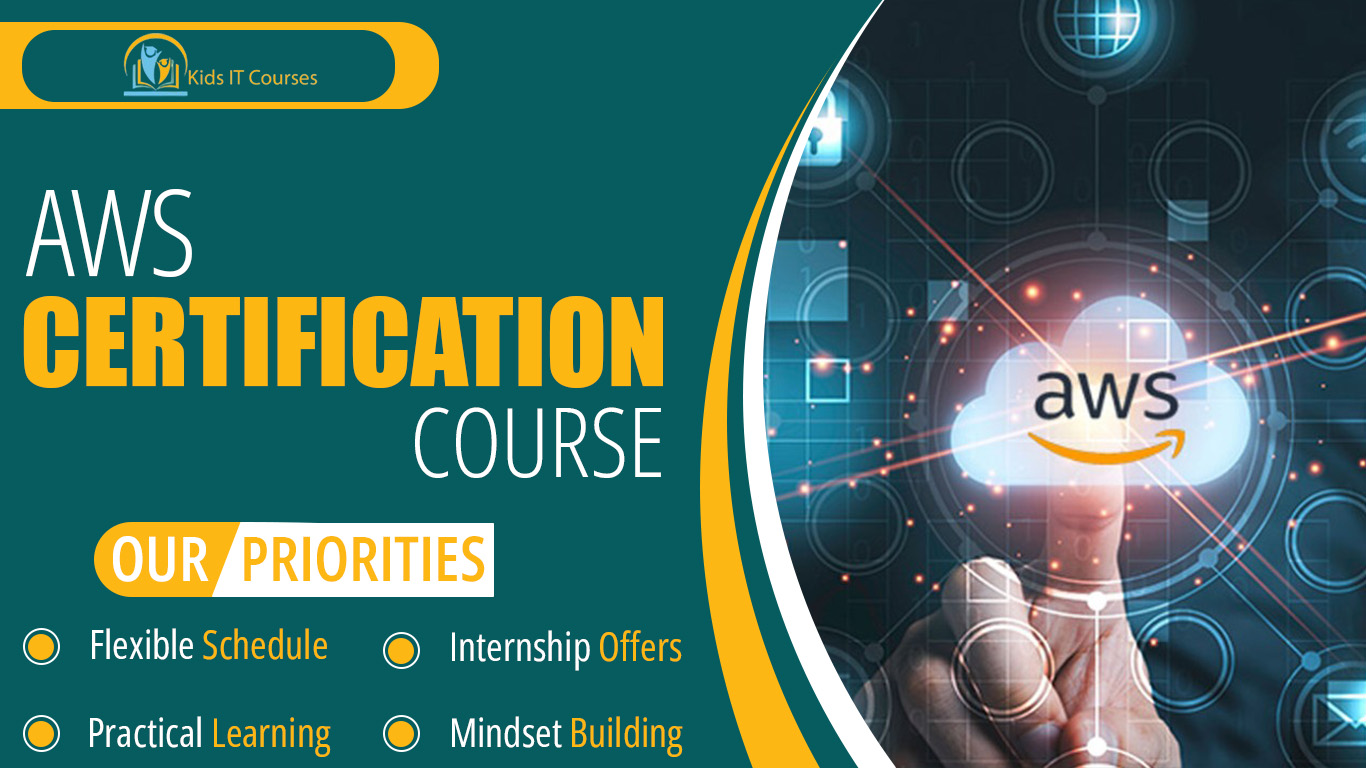
AWS Course for Kids
Definition
• AWS is like a big computer on the internet. It helps store and run things online.
• Kids learn how websites and apps work on AWS. It’s like their home on the cloud.
• It stores files safely without using your own computer. It keeps data secure and always ready.
• It can make apps and games work faster. AWS has strong tools for speed.
• Kids explore cloud storage, servers, and databases. They learn what keeps the internet running.
• It shows how big companies use AWS daily. Like Netflix, games, and online shops.
• AWS skills are useful for the future. This course gives kids a head start.
Importance
• AWS helps store files safely online. Kids learn how to save data in the cloud.
• It teaches how websites run on the internet. They see how hosting works behind the scenes.
• Kids explore tools for making apps and games. AWS gives many easy-to-use services.
• It shows how to share information anywhere. Files can be opened from any device.
• AWS helps understand safe and secure computing. It teaches online safety tips too.
• It builds problem-solving and technical thinking. Kids get better at finding smart solutions.
• AWS skills are useful for future jobs. It gives kids an early tech advantage.
Advantages for Freelancing
• Kids learn how websites and apps work online. AWS is like the internet’s storage and brain.
• They understand cloud storage in a fun way. It’s like a big online backpack for data.
• AWS helps them build simple online projects. They can make apps, games, or websites.
• It teaches safe and smart online work. Kids learn to use technology wisely.
• They get skills used by real companies. This makes them future-ready for jobs.
• It boosts problem-solving and thinking skills. AWS challenges kids to create smart solutions.
Session 1 : What is AWS?
Introduction to cloud computing and AWS as a leading cloud platform
Real-life example: Hosting a website or app using AWS services
Key benefits of cloud computing: scalability, flexibility, cost-efficiency
Overview of AWS global infrastructure: regions and availability zones
Activity: Explore the AWS Management Console
Session 2 : Core AWS Services
Introduction to key AWS services: EC2, S3, RDS, Lambda
Real-life example: Storing images in S3 or hosting an app on EC2
Understanding how each service supports cloud-based apps
Activity: Launch a virtual server (EC2 instance)
Session 3 : AWS Storage & Databases
Overview of storage services: S3, EBS, Glacier
Overview of AWS databases: RDS, DynamoDB
Real-life example: Storing backup files and customer data
Activity: Upload files to S3 and create a simple DynamoDB table
Session 4 : AWS Networking & Security
Introduction to VPC, IAM, and security best practices
Real-life example: Creating secure environments for web apps
Managing permissions using IAM roles and policies
Activity: Set up a secure user and restrict access
Session 5 : Automation & Monitoring in AWS
Introduction to CloudWatch, Auto Scaling, and CloudFormation
Real-life example: Automatically restarting a failed instance
Monitoring resources and automating deployments
Activity: Set up a CloudWatch alarm
Session 6 : Serverless Computing with AWS
Understanding Lambda, API Gateway, and serverless architecture
Real-life example: Building a function that sends emails on user signup
Introduction to event-driven apps
Activity: Deploy a Lambda function with API Gateway
Session 7 : Real-World AWS Applications
Case studies: how companies use AWS (Netflix, NASA, startups)
Hosting websites, managing big data, using AI services
Real-life example: Launching a startup with AWS tools
Activity: Simulate deploying a small web app using AWS
Session 8 : AWS Certifications & Career Path
Overview of AWS certifications: Cloud Practitioner to Solutions Architect
Skills and learning paths for AWS careers
Real-life example: A day in the life of an AWS cloud engineer
Activity: Create a career roadmap using AWS resources
Bonus Materials
AWS glossary and service map
Practice labs and mini projects
AWS Free Tier usage tips
Official links to AWS training resources
Certificate of Completion for AWS
